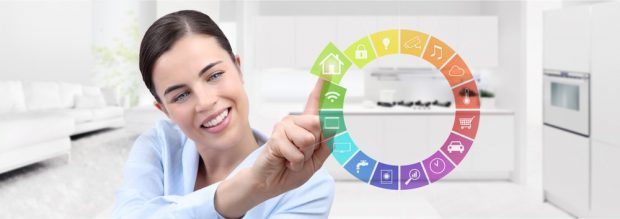5 Phases of History Showing How Home Automation Has Evolved
The concept of smart homes has played out over the past 75-100 years in science fiction. Ray Bradbury’s “There Will Come Soft Rains” might strike fear in the hearts of modern homeowners considering automation, but modern home automation focuses on science, rather than the dark fiction that played out in that iconic short story.
But Bradbury and his contemporaries—along with the hard-working scientists of that time and over time—sparked imaginations for decades. Ultimately, the future of home automation is looking a lot more like “The Jetsons” than a spooky science fiction short story.
From everyday people to technology innovators, the world has been waiting and working toward finding and adopting smart home services that save money.
Let’s take a look at five phases of home automation history to see how it has all evolved to save money and time and offer convenience.


1. The Invention of Home Appliances
According to some sources, while true smart home technology has only existed for a relatively brief time, it started more than a century ago. There were many inventions that served as precursors to smart technology. The closer you look, the more you see that those early inventions have led us to our amazing technological world today.
Going back to the turn of the 20th century, from 1901-1920, inventors came up with several new home appliances that weren’t “smart,” but they probably had the same effect on people who had hand-washed clothes previously in a tub. Appliances like vacuum cleaners, washing machines, clothes dryers, irons and toasters were just the beginning of the march toward smart home automation.
2. Introducing the ECHO IV
Later, in the 1960s, the earliest “smart device,” known as the ECHO IV, was invented but not widely distributed. This kitchen computer could compile grocery lists, control the home’s temperature and turn appliances off and on.
3. The Modern Introduction of Smart Home Technology in the 1970s
In 1975, the X10 arrived on the scene. This home automation platform sent digital data via radio frequency bursts throughout a home’s electrical wiring system. Families who adopted this technology could control various devices using a central command console and various modules.
4. The Early Modern Era of Smart Technology from the 1990s Through the Early 2000s
In the 1990s came gerontechnology, combining gerontology and technology, that served to make the lives of aging citizens easier. One of the most prominent contributions to that industry and era was the iconic Life Alert “I’ve fallen, and I can’t get up” campaign.
In the late 1990s and early 2000s, smart home technology as we know it today began to take shape and increase in popularity. As things like home networking and domestic technologies became increasingly common, smart home technology has been going on for nearly 20 years gradually and organically.
5. Today’s Smart Home Automation
Today’s smart home technologies are simultaneously more complex and more user-friendly. Innovators have worked for decades to create this balance that offers unprecedented convenience at a cost you can afford. Best of all you can save money with smart home thermostats, smart light switches, smart plugs and home lighting automation when working with a company that offers a broad range of innovative smart features. You can enjoy everything from practical features, such as smart lights, to entertainment and security.
Home Automation Has Become an Invaluable Aspect of Modern Life
Looking back at the history of home automation, it almost seems like it was inevitable that we would arrive at this point where we can enjoy convenience and security like no other time in history. Even better, home automation is becoming increasingly available to everyone, especially when using DIY smart home automation systems that guide you through everything you need to know.